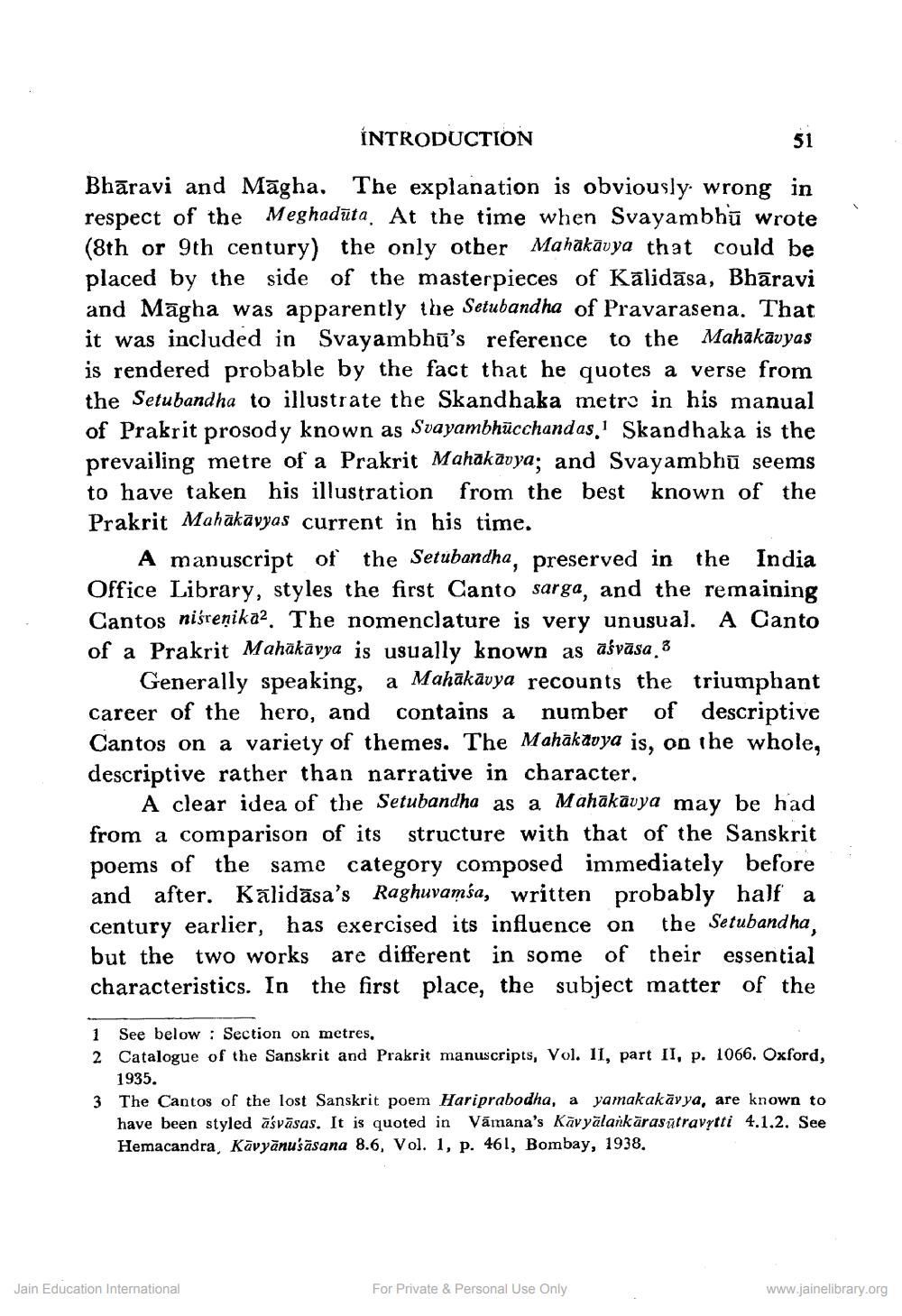________________
INTRODUCTION
51 Bhāravi and Māgha. The explanation is obviously. wrong in respect of the Meghadāta. At the time when Svayambhū wrote (8th or 9th century) the only other Mahakāvya that could be placed by the side of the masterpieces of Kālidāsa, Bhāravi and Māgha was apparently the Setubandha of Pravarasena. That it was included in Svayambhū's reference to the Mahakāvyas is rendered probable by the fact that he quotes a verse from the Setubandha to illustrate the Skandhaka metro in his manual of Prakrit prosody known as Svayambhūcchandas. Skandhaka is the prevailing metre of a Prakrit Mahakāvya; and Svayambhū seems to have taken his illustration from the best known of the Prakrit Mahakavyas current in his time.
A manuscript of the Setubandha, preserved in the India Office Library, styles the first Canto sarga, and the remaining Cantos niśrenika2. The nomenclature is very unusual. A Canto of a Prakrit Mahäkävya is usually known as aśvāsa 3
Generally speaking, a Mahākāvya recounts the triumphant career of the hero, and contains a number of descriptive Cantos on a variety of themes. The Mahakavya is, on the whole, descriptive rather than narrative in character.
A clear idea of the Setubandha as a Mahākāvya may be had from a comparison of its structure with that of the Sanskrit poems of the same category composed immediately before and after. Kalidāsa's Raghuvamsa, written probably half a century earlier, has exercised its influence on the Setubandha, but the two works are different in some of their essential characteristics. In the first place, the subject matter of the
1 See below : Section on metres, 2 Catalogue of the Sanskrit and Prakrit manuscripts, Vol. 11, part II, p. 1066. Oxford,
1935. 3 The Cantos of the lost Sanskrit poem Hariprabodha, a yamakakāyya, are known to
have been styled aśvāsas. It is quoted in Vamana's Kavyalankāras atravytti 4.1.2. See Hemacandra, Kavyānusāsana 8.6, Vol. 1, p. 461, Bombay, 1938.
Jain Education International
For Private & Personal Use Only
www.jainelibrary.org




